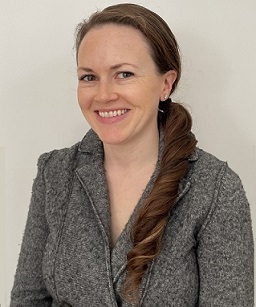
Brianna Rae Zoto
The following narrative is excerpted from Brianna's Formal Proposal documentation.
From 1947 to 1949, Howard Sargent led excavations at Grannis Island with volunteers
from the New Haven Chapter of the Archaeological Society of Connecticut (ASC). The New
Haven ASC chapter continued excavations at Grannis Island and Grannis Beach from 1950 to
1974. Ultimately, a total of 519 six-by-six-foot units were excavated, producing 6,651 artifacts,
which include formal lithic tools, debitage, Native ceramics, and faunal remains. Grannis Island
has been referred to as "one of the larger, more important sites in the state" and "'a priceless
archaeological treasure' due to the large quantity of artifacts and unique features like dog burials
documented in 2008.
Securely dating the shell midden and other features from the Grannis Island/Grannis
Beach sites is of critical importance to interpretation of this significant Connecticut
archaeological site, which has essentially been forgotten for more than 30 years. The sites have
the potential to yield important information about the Native American history of Connecticut, as
well as illuminate the still poorly understood Orient Phase of the Terminal Archaic period. The
project will also demonstrate the utility of using legacy collections for modern archaeological
research, hopefully encouraging others to look at the archive as a viable alternative to fieldwork.
I propose to publish the results of the radiocarbon analysis in the ASC Newsletter prior to
completing my dissertation and publishing the results for a regional or national audience.
Brianna's dissertation research has two main objectives regarding Grannis Island/Grannis
Beach: 1) to investigate the substantial Orient Phase component at the sites; 2) to evaluate the
efficacy of archival collections for archaeological research. The sites contain a relatively large
assemblage of diagnostic artifacts dating to the Orient Phase of the Terminal Archaic period.
This cultural period has long intrigued archaeologists, as it straddles the end of the Late Archaic
and the beginning of the Early Woodland periods, and seems to have attributes of both eras. Since the
Grannis sites have an unusually high density of diagnostic material from the Orient phase, including Orient
Fishtail points, steatite bowl fragments, and features, it provides an opportunity to analyze this
still-enigmatic cultural period.
She will also use the Grannis collections as a case study to test the utility of archival
collections for modern archaeological research and to create a blueprint for extracting
meaningful data from legacy collections. Often, archaeologists and graduate students conduct
their research through new field excavations, while older collections languish in storage and
rarely receive proper cataloguing, analysis, or publication. While working archival collections like Grannis
have challenges, usually due to antiquated excavation methods or inconsistent documentation, the hope to
show that these kinds of collections can benefit from systematic inventory and analysis, along with the
application of modern analytical techniques such as radiocarbon dating.
In order to successfully meet these dissertation research goals, she is requesting funding
for eight AMS (Accelerator Mass Spectrometry) radiocarbon dates from charcoal and bone samples from
the Grannis Island and Beach sites. I have carefully selected appropriate samples to answer specific
questions about the occupational history of the sites and clarify the association of features and
diagnostic artifacts.
There is also a need to obtain radiocarbon dates from the Grannis Island shell midden in order to
understand the formation and subsequent abandonment of the shell midden. Dating the shell
midden is vital to understanding the site in general, as excavators treated the midden as one layer
and were not able to distinguish distinct episodes of use. The midden contains diagnostic
material from the Late Woodland period, but also has some Terminal Archaic artifacts. Based on
these data it is unclear whether the shell midden was used over an approximate 3,000-year span
or if it has a more restricted depositional history.
Securely dating the shell midden and other features from the Grannis Island/Grannis
Beach sites is of critical importance to interpretation of this significant Connecticut
archaeological site, which has essentially been forgotten for more than 30 years. The sites have
the potential to yield important information about the Native American history of Connecticut, as
well as illuminate the still poorly understood Orient Phase of the Terminal Archaic period. The
project will also demonstrate the utility of using legacy collections for modern archaeological
research, hopefully encouraging others to look at the archive as a viable alternative to fieldwork.
I propose to publish the results of the radiocarbon analysis in the ASC Newsletter prior to
completing my dissertation and publishing the results for a regional or national audience.
|
